Victorian Holiday Decor Will Give Your Home Vintage Elegance
Get decorating inspiration for trees, tabletops, and more from the Victorian era's interiors and Christmas traditions.
Vintage design elements continue to inspire holiday decorating, according to Etsy’s 2023 trends report, and Victorian style is one hot historic influence. Etsy predicts the opulent era’s impact will be seen in intricate patterns found on and under the tree as both ornaments and gift wrap, as well as through platters and vases on tablescapes and mantels. When it comes to bygone holiday inspiration, the Victorian era has a lot to offer, from its grand interiors to its legacy of Christmas decorating and traditions.
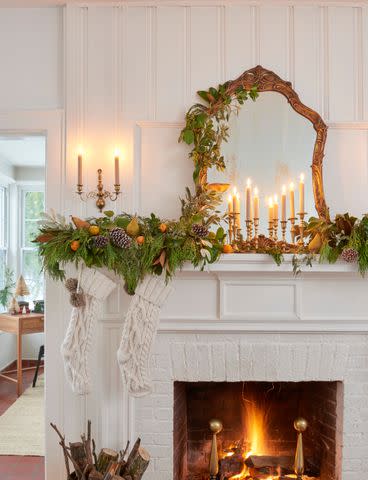
John Gruen
What Is Victorian Style?
Generally, Victorian style refers to the reign of the British Queen Victoria from 1837 to 1901. In that era, interiors were grandly designed and ornately decorated with architectural details, chandeliers, carved wood and parquet floors, as well as brightly colored and patterned wallpapers and textiles used on upholstery, tapestries, and dramatically draped window coverings.
The truly maximalist interior style mixed a variety of colors and patterns, including intricate William Morris designs, traditional damasks and fleur-de-lis, vibrant jewel tones, and rich woods. Embracing one or more of these period-appropriate patterns and colors, through everyday pieces like accent textiles and dinnerware, is a simple way to dress up holiday spaces from dining tables to guest rooms.
The Victorian era also had a major and lasting impact on our contemporary ideas about the holiday season. During that time, Charles Dickens wrote A Christmas Carol, the Christmas tree was popularized, and the Christmas card was created.
For authentic Victorian decorating ideas, we reached out to Körner’s Folly, a historic Victorian-era home in Kernersville, North Carolina. Built in 1880 by Jule Gilmer Körner, the historic home goes all-out for the holidays. Suzanna Ritz Malliett, executive director of Körner’s Folly Foundation, shares traditional elements of Victorian Christmas decorating, plus tips for how to embrace Victorian holiday cheer when decorating today.
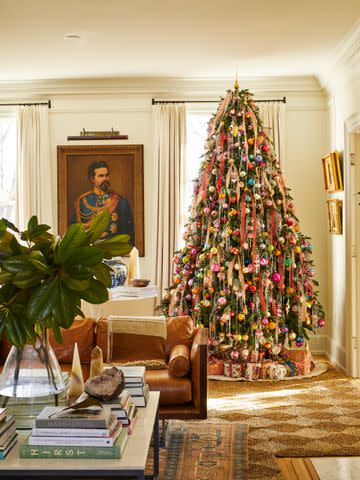
Annie Schlechter
Decorate for the Holidays with Victorian Design Elements
1. Christmas Trees
A German holiday tradition, these iconic holiday decorations far pre-date the Victorian era, but they experienced a dynamic growth in popularity thanks to the British Royals. “The first tree that a young Victoria decorated for Christmas actually came from her Aunt Sophia, who pulled from her mother’s German heritage in deciding on the decorations,” says Suzanna. In addition to freshly-cut evergreens, Suzanna says “feather trees” were the era’s artificial trees made from green-dyed goose feathers attached to sticks.
2. Stockings
Hanging from mantels, banisters, walls, stockings were present for those visiting the home on Christmas Day. “Victorians used comparatively plain stockings, but made sure to embroider names on each,” says Suzanna.
Related: 4 Places to Hang Stockings If Your Home Lacks a Mantel
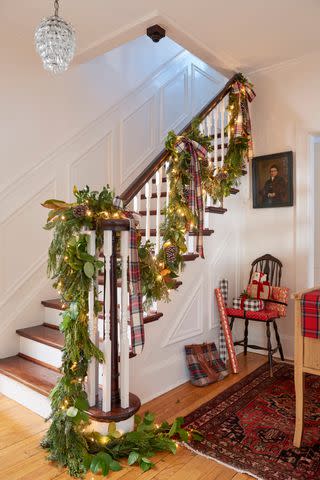
John Gruen
3. Fresh Greenery
“Wreaths, swags, and garlands made from fresh-cut greenery (especially on mantels, around doorways, and intertwined around staircases), as well as mistletoe ‘kissing balls’ played a huge part in Victorian décor,” says Suzanna. She recommends incorporating natural garlands of cedar, pine, eucalyptus, fir, ivy, holly, and juniper, with accents of feathers, berries, and pinecones.
4. Decorative Food
Festive desserts would have been included among the holiday meals, but these edible decorations found their way to trees and decor, too. “Marzipan or sugared fruits, cookies in the form of animals, stars, and elves, garlands of cranberry and dyed popped corn, or even dried orange or lemon slices add texture and depth while keeping with tradition,” says Suzanna.
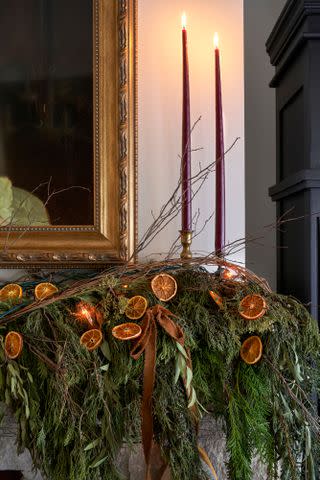
James Schroder
5. Candles
“Some of the first trees ever decorated, including the one by a young Queen Victoria, featured real candles,” says Suzanna. Candles adorned trees, garlands, mantels, and tables, giving Victorian rooms a warm glow. Today, incorporating real or flameless candles throughout your home enhances the Victorian ambiance. For the tree, Suzanna recommends warm white lights instead of colorful strands or cool whites to mimic the Victorian lighting.
6. Ribbon
Suzanna says ribbon was a popular decoration because it was affordable and readily available. In particular, ribbon added cheer “in different configurations including cascading down from a large bow on top, tucked in, looping, dipping, or twirling around the tree.”
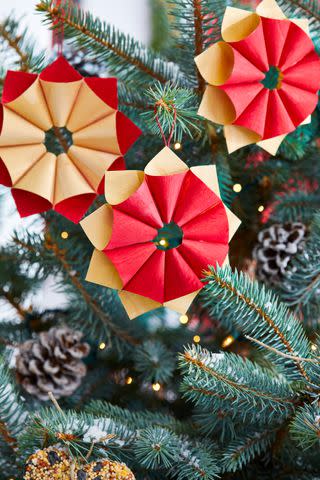
Carson Downing
7. Paper Ornaments
Another cost-effective Victorian decorating tactic, handmade ornaments often featured angels, flowers, bells, cornucopias, and stars. These are an “inexpensive way to decorate the tree in typical Victorian maximalist fashion,” says Suzanna.
8. Hand-Blown Glass Balls
These classic orbs originated in Germany and added an elegant touch to Victorian trees. Although technology has evolved to create an endless array of shapes, simple spherical ornaments provide a period-appropriate tree trimming that has a simple contrast to some of the more ornate shapes of Victorian decorating.
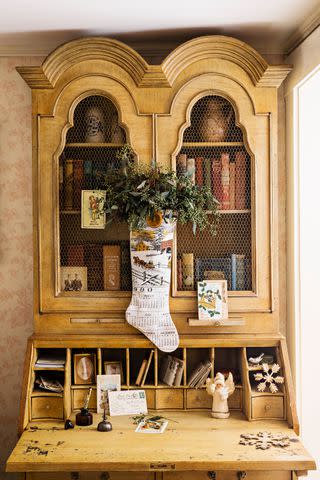
Joyelle West
9. Christmas Cards
A festive new development in the Victorian era, the first Christmas card was created in 1843 by Sir Henry Cole. According to Suzanna, these early Christmas cards often featured flowers and animals, and they were exchanged as gifts and then prominently displayed in the parlor near the Christmas tree, or on mantels, tables, and even tucked into garlands or banners.
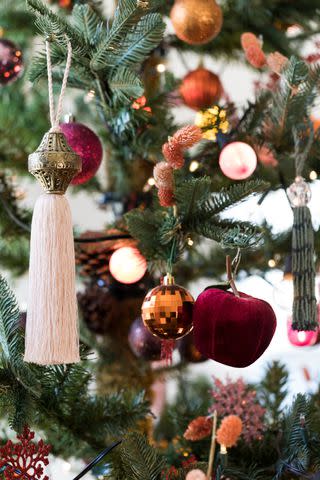
Ball & Albanese
10. Jewel Tones
“The Victorian era was marked by a preference for deep jewel tones, which was reflected in their choices for holiday decorating as well,” says Suzanna. “Traditional colors include burgundy, gold, and emerald green, but Victorians also used red and blue, blue and white, and blue and green, even in their depictions of Saint Nicholas.” Suzanna recommends a three-color palette for the tree (noting that cream, gold, and green are especially popular at Körner’s Folly). “Then load it up with all of the ornaments, garlands, and ribbon you can find in those three colors for that tightly-packed Victorian look.”
Avoid Non-Victorian Seasonal Icons
Suzanna notes that for a truly traditional Victorian style, you should avoid colorful lights and snowflakes. She also highlights that today’s jolly rotund Santa is not in keeping with the era. “Victorian depictions of St. Nicholas typically show a figure who is slender and less merry, often wearing a blue, white, or green long robe.”
For more Better Homes & Gardens news, make sure to sign up for our newsletter!
Read the original article on Better Homes & Gardens.
